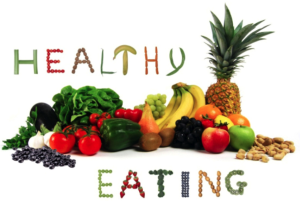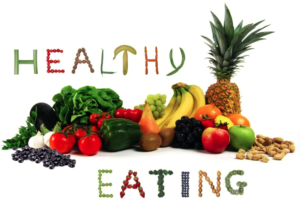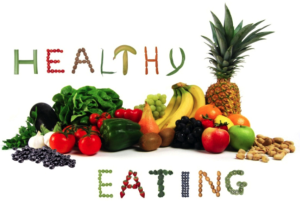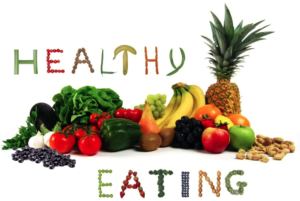Vegetable Oils: Beware of Common Fats That Are Even More Dangerous Than Trans Fats
By Elaine Charles, part 8 in my series on healthy eating
Nina Teicholz is an investigative journalist and author of The Big Fat Surprise: Why Butter, Meat, and Cheese Belong in a Healthy Diet. Nina was one the reporters who initially broke the story on the dangers of trans fats, 10 years ago, in an article for Gourmet magazine.
It received an enormous amount of attention, which eventually led to a contract for a book on trans fats. At the same time, she was working as a restaurant review critic, and the meals she received from the chef were foods she’d never eaten before.
“Liver, creamy sauces, cheeses, red meat – and I found them to be delicious. Rich, earthy textured foods. I also found that I lost this stubborn 10 pounds I had been fighting for the most of my adult life, and my doctor said my cholesterol levels were fine.”
These are the types of foods that are said to be really bad for your health, yet she had the complete opposite experience. As an investigative reporter, she felt compelled to get to the bottom of the mystery.
Along the way, she also discovered that while trans fats are now increasingly on the “outs,” the vegetable oils replacing trans fats may be even more harmful…
How Trans Fats Became the Backbone of the Food Industry
Most edible oil chemists are men, Nina notes, but there was one woman in the field, Mary Enig PhD, who had been warning people about trans fats starting in the late 1970s.
No one was listening to her though, and she was widely regarded as a bit of a crackpot. An independent thinker, Dr. Enig was also a pioneer in educating people—myself included—about the health dangers of unfermented soy.
“Trans fats come about when vegetable oil is hardened,” Nina explains. “Vegetable oils only entered the American food supply in the early 1900s.
Before 1900, American housewives cooked with lard and butter. Then vegetable oils, first in the form of cottonseed oils, came in. The very first hardened vegetable oil product was Crisco, introduced in 1911.
That’s when trans fats, which are produced when you harden oil through hydrogenation, entered the US food supply.”
Hydrogenated vegetable oils and margarine quickly became the backbone of the food industry. They ramped up from zero percent of the food supply to seven or eight percent today.
According to Nina, the increase in the amount of vegetable oils we eat is the single biggest increase in any kind of food nutrient over the course of the 20th century.
According to one calculation, we now eat more than 100,000 times more vegetable oils than we did at the beginning of the century. Vegetable oils were virtually nonexistent at the beginning of the century. Now, they make up about 7-8 percent of all calories consumed by the American public.
“Every packaged food—every cookie, cracker, microwave popcorn, frozen food—everything was made with trans fats. And our French fries were fried in them,” she says.
“But it turns out that trans fats – due to the work of Mary Enig (who signaled the alarm) and another researcher whom you’ve interviewed, Fred Kummerow, – they were found to have health problems. They interfered in the basic cellular membrane functioning.”
Trans Fat Harm Was Identified in the 1930s
Indeed, Dr. Fred Kummerow—now nearly 100 years old— realized the hazards of trans fats in the 1950’s, and was the first researcher to publish a paper on it in 1957. He discovered that it’s not cholesterol that causes heart disease, rather the trans fats are to blame.
Still, trans fats didn’t become a major issue in the US until the early 2000s, when it was found that they slightly raise your LDL cholesterol. Since the expert community is so focused on cholesterol to the exclusion of everything else, they started banning trans fats based on that cholesterol effect.
“That was also the reason that the Food and Drug Administration (FDA) used to finally decide to put trans fats on the food label. They wanted consumers to know that foods contained trans fats because by the late 2000s, they were considered really to be a dangerous kind of fat,” Nina says.
“To me, it’s definitely true that trans fats are not healthy for us. But I’m not sure that they were condemned based on the right reason.”
The Cholesterol Fallacy
In the 1950s, saturated fats were condemned on the basis of them raising your cholesterol. At that time, we had only a primitive understanding of what causes heart disease. But we could measure HDL and LDL cholesterol, and the research community focused in on LDL, which became known as the “bad cholesterol.”
Since then, a large number of clinical trials have shown that LDL cholesterol levels, except in extreme cases, actually are very poor predictors of heart attack risk.
And, as our understanding of biomarkers has evolved over the last 15 years, it turns out there are other biomarkers that far more accurately predict heart risks, such as your LDL particle number.
“But going back to trans fat, it was condemned on the basis of LDL. It seems like the wrong piece of evidence against trans fats. There were plenty of other things that were worrisome about trans fats that make that perhaps not a bad decision, except for one big thing—nobody really thought about what would replace trans fats,” Nina says.
Heated Vegetable Oils Create Harmful Oxidation Byproducts
On a side note, there’s also the issue of glyphosate contamination and genetic engineering that make vegetable oils of today even more hazardous than the earlier varieties. That said, from the very beginning, vegetable oils always had the problem that they were unstable.
When heated, especially to high temperatures, they degrade into oxidation products. More than 100 dangerous oxidation products have been found in a single piece of chicken fried in vegetable oils, Nina says.
“That’s the reason that vegetable oils were hardened to be able to be used in the first place,” she says. “They couldn’t be used simply as oil. Once there was a technology that figured out how to use them just as oils by actually changing the fatty acid structure in oils, vegetable oils in bottles like Wesson Oil and canola oils came to the market, in the 1940s.
But even back then, in a number of animal experiments that were done, there were tremendously worrying results. Animals would get cirrhosis of the liver or enlarged liver. And then when they were eating heated vegetable oils, they would die prematurely.”
So, while trans fats are being recognized as harmful and are in the process of being completely eliminated, we’re still faced with a huge problem, because restaurants and food service operations are reverting back to using regular vegetable oils (such as peanut, corn, and soy oil) again for frying. But these oils still have the worrisome problem of degrading into toxic oxidation products when heated!
Trans Fats Are Being Replaced with Equally Worrisome Oil Products
The latest issue of Wise Traditions, the Weston Price journal, has a great article that is an excerpt from her book, in which she discusses this topic. Most of you reading this are now well aware of the dangers of trans fats, and that the FDA is in the process of banning them completely. That’s great news, but the question is, what is trans fat being replaced with? The answer is that the oils they’re currently using in lieu of trans fats create toxic oxidation products, which in fact may be more toxic than trans fat.
“I stumbled on this topic because a vice president of Loders Croklaan, a big fats and oils producer, said to me, ‘I just heard this terrifying talk by a man in a company who does all the cleaning for fast food restaurants.’… He said they have been having problems since restaurants started getting rid of trans fats in their fryers around 2007… The new oils were building up gunk in the drains and on the walls.
This kind of gunk would harden, and workers would scrape for days and not be able to get it off. The conventional cleaners didn’t work anymore. It’s turning out to be these highly volatile airborne chemicals. When the restaurants’ uniforms would be cleaned, the chemicals were so volatile that they would have problems of piles of uniforms spontaneously combusting in the back of trucks. And then they would go to the dryers. The heat of the dryers, even after the restaurant uniforms were cleaned, would cause fires.”
The cleaning company ended up producing a more potent chemical cleaner to scrub off the polymers off the walls and uniforms. Unfortunately, the nutrition community is not studying these volatile vegetable oils. Others, primarily in the molecular biology and genetics fields are, but the different fields are not communicating with each other.
Even Low Levels of Aldehydes Cause Massive Inflammation
One group in Taiwan is studying this issue because women have much higher rates of lung cancer than men. They think it may be related to the fact that women, particularly in Asian countries, stir-fry in unventilated spaces using vegetable oils. In Norway, there’s another research group trying to assess the effects on worker health in restaurants.
“[These volatile compounds] are very hard to study because they are very ephemeral, literally changing from one second to the next…They’re very unstable. They’re hard to isolate,” Nina explains. “One thing they did was simply to show that these products exist. There’s a whole category called aldehydes, which are particularly worrisome.
A group doing research on animals have found that at fairly low levels of exposure, these aldehydes in animals caused tremendous inflammation, which is related to heart disease. They oxidized LDL cholesterol, which is thought to be the LDL cholesterol that becomes dangerous. There’s a link to heart disease. There’s also some evidence that links these aldehydes in particular to Alzheimer’s. They seem to have a very severe effect on the body.”
One researcher has found that aldehydes cause toxic shock in animals through gastric damage. We now know a lot more about the role your gut plays in your health, and the idea that aldehydes from heated vegetable oils can damage your gastric system is frighteningly consistent with the rise we see in immune problems and gastrointestinal-related diseases.
“When the FDA got rid of trans fats… restaurants began to use these regular liquid oils instead… they were the cheapest possible option to use… The FDA really did not consider any of this literature about these oxidation products. When you implement a law, you’re supposed to look at the risks. What will happen if you implement a new regulation? In this case, the FDA did not,” Nina says.
In hearing this, it appears as though cooking with vegetable oil could be a “new” occupational hazard (having occurred within the last 10 years or so) for restaurant workers. If vegetable oils volatize and gum up into polymers that are nearly impossible to clean, and that are damaging fryers, equipment, and causing uniforms to spontaneously combust, what is it doing to the workers’ lungs? Larger fast food chains are aware of this issue, and have implemented a number of fixes to address it. But smaller restaurants may be unaware of this problem, thereby placing workers at potential risk. The same applies if you’re regularly cooking with vegetable oils in your home.
Saturated Fats Are Stable, and Therefore Ideal for Cooking
Tallow is a hard fat that comes from cows. Lard is a hard fat that comes from pigs. They’re both animal fats, and used to be the main fats used in cooking. One of their benefits is that, since they’re saturated fats, they do not oxidize when heated. And saturated fats do not have double bonds that can react with oxygen; therefore they cannot form dangerous aldehydes or other toxic oxidation products.
“They’re solids at room temperature. That’s why they make great cooking fats and have always made great cooking fats. But we don’t think about that. This whole chain of events has happened because we demonized saturated fats,” Nina notes.
Fortunately, we’re now seeing cracks in the prevailing dogma about saturated fats. In March of this year, a groundbreaking meta-analysis reviewed the clinical trial evidence and the epidemiological evidence, and came to the conclusion that saturated fats really cannot be said to cause heart disease. Another meta-analysis three years earlier came to the same conclusion.
Saturated Fat – It Does a Body Good…
The benefits of saturated fat are many. Some appear to be uniquely traceable to saturated fat. For example, you need saturated fats for brain and immune system health. Another argument is that animal foods in general, including meat cheese, butter, dairy, and eggs, contain high amounts of vitamins. Vitamins A, D, E, and K are fat-soluble, and you have to have the fat that comes naturally in animal foods along with the vitamins in order to absorb those vitamins.
“If you’re drinking skim milk, you don’t have the fat you need to absorb the vitamins in milk. Without absorbing the vitamins, you can’t absorb the minerals. These are uniquely nutrient-dense foods. Vitamin B6 and B12, you can’t get in plant foods. They’re really nutrient-dense foods that come packaged in the fat that you need to absorb them, along with protein. They’re kind of a perfect package of nutrient-dense food,” Nina says.
Nina also points out that many clinical trials over the past decade have clearly showed that a diet higher in fat and restricted in carbohydrate results in health improvements such as weight loss and a reduction in risk factors for diabetes, and heart disease. A high-fat diet typically means eating animal foods. Of course, there are very healthy saturated plant fats as well—coconut oil and palm oil, specifically. (Avocado, another healthy fat, is unsaturated.)
“[Coconut and palm oil] have been used for millennia in Asian cultures. They are making a big comeback in part because vegans who don’t want to eat animal products have found that they still need a fat for cooking that doesn’t oxidize when it’s heated… Coconut oil fills that function. In the food industry, they’ve started to bring back palm oil, which has a lot of saturated fat in it and is a good way to make food that lasts long on a shelf, because again, saturated fats are more stable and long-lasting.”
Healthy Eating Guidelines for the 21st Century
So, what’s the general 21st century revised rule for healthy living and eating? One of the most important points is that you do not need to avoid saturated fats. Saturated fats were unfairly condemned in the 1950s based on very primitive evidence that has since been re-analyzed. The evidence now clearly shows that saturated fats do not cause heart disease. Moreover, your body needs saturated fats for proper function of your:
- Cell membranes
- Liver
- Immune system
- Heart
- Lungs
- Satiery (reducing hunger)
- Bones (to assimilate calcium)
- Hormones
- Genetic regulation
“Another key piece of information is that a high-fat, carbohydrate-restricted diet looks healthier for losing weight, and making your heart disease biomarkers and diabetes biomarkers look better. There’s a real range in how much carbohydrates people will tolerate,” Nina says.
Many people need to increase the healthful fat in their diet to 50-85 percent of daily calories. This includes not only saturated fat but also monounsaturated fats (from avocados and nuts) and omega-3 fats. When it comes to cooking fats, few compare to tallow and lard in terms of health benefits and safety. These are the cooking fats that were originally used, and they’re excellent frying fats.



















